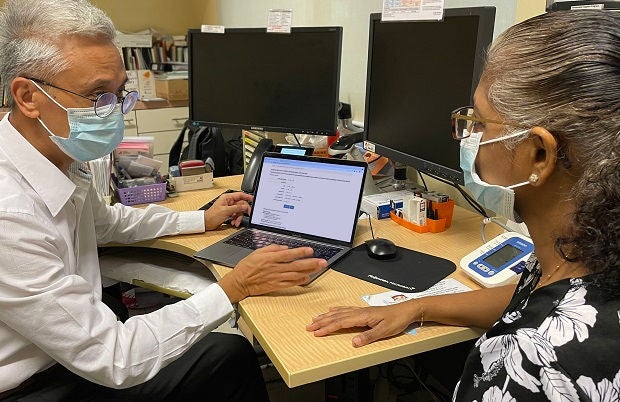
A new risk calculator for coronary artery disease among Southeast Asians in primary care settings shows predictive accuracy.
The study on the risk calculator “PRECISE” (Predictive Risk scorE for CAD In Southeast Asians with chEst pain) was conducted by SingHealth Polyclinics (SHP) in collaboration with National Heart Centre Singapore (NHCS), Duke-NUS Medical School and National Healthcare Group Polyclinics.
“PRECISE is designed for use in patients who experience chest pains. With this new tool, CAD risk can be calculated both with and without additional electrocardiography (ECG) data,” said Dr Sinead Wang (pictured below), Consultant, SHP-Outram, and the main author of this study.

Greater accuracy
Globally, the three most common prediction tools are the Duke Clinical Score, CAD Consortium Score, and the Marburg Heart Score. However, these have not been validated for use locally to support decision-making in routine clinical practice.
PRECISE comprises nine clinical variables, with varying weightages. These include age, gender, type of chest pain, pain radiating to the neck, smoking status, presence of diabetes, hypertension, and ECG features. Among different populations, the same variable may have different weightage due to the unique genetic and environmental influences in each population.
More than 1,600 patients who presented with symptoms of chest pain were identified and recruited at SHP’s eight polyclinics for the study. The patients were clinically stable and subsequently referred to NHCS for further cardiac evaluation. About 160 patients were ultimately diagnosed to have CAD, while the rest were assessed as CAD negative.
In follow-up visits a year later, less than one per cent of the patients who were identified as CAD negative developed major adverse cardiovascular events.
Statistical methods used to quantify and compare the various models showed PRECISE to have a higher predictive accuracy compared to the three existing tools. Patients who show a higher risk percentage on PRECISE are more likely to have true CAD than those with a lower risk percentage.
PRECISE has also been made available to general practitioners since March 2021, as they are often the first physician a patient suffering from chest pain would seek help from. “The practice of medicine has evolved over the years with the increasing use of risk prediction tools. PRECISE provides an objective estimation of risk to complement and guide a doctor’s decision-making,” Dr Wang said.
Enhancements to the electronic medical record platform are under way to enable the use of PRECISE at SHP. Links are in place to enable healthcare workers to obtain information, such as age, gender and diagnosis of hypertension or diabetes, from a patient’s existing health records with SHP.
“Dr Chest Pain” chatbot
A chatbot currently being piloted at SHP-Bukit Merah and SHP-Outram helps triage patients with chest pain. Called “Dr Chest Pain”, this chatbot uses a rule-based triaging algorithm to assess the patient’s condition and medical history, such as vital signs, pre-existing chronic diseases and chest pain characteristics. It then makes a recommendation for symptomatic treatment, diagnostic tests or follow-up by cardiac specialists.
The CAD risk prediction tool is incorporated within the chatbot so that the recommendations are aligned with the predictions. For example, patients at low risk will only require symptomatic treatment, while those who present with intermediate risk will be scheduled for a follow-up appointment with a specialist. Those with higher risk of heart disease, who may urgently require a cardiologist’s review and management, will also be identified quicker.
This would allow early clinical intervention that can potentially save lives and optimise clinical outcomes for patients.
Did you know?
Cardiovascular disease (namely heart attack and stroke) is the leading cause of death globally. In Singapore, CAD accounted for 20 per cent of deaths in 2020. CAD may present as recurrent chest pain or breathlessness on physical exertion, but may also have no warning symptoms and manifest suddenly as a heart attack.
Seek prompt medical attention if you experience these symptoms:
- Chest pain that is located behind the sternum, or on the left side of the chest
- Chest pain that is worse on physical exertion
- Chest pain that is relieved by resting
Get the latest updates about Singapore Health in your mailbox! Click here to subscribe.













 Get it on Google Play
Get it on Google Play